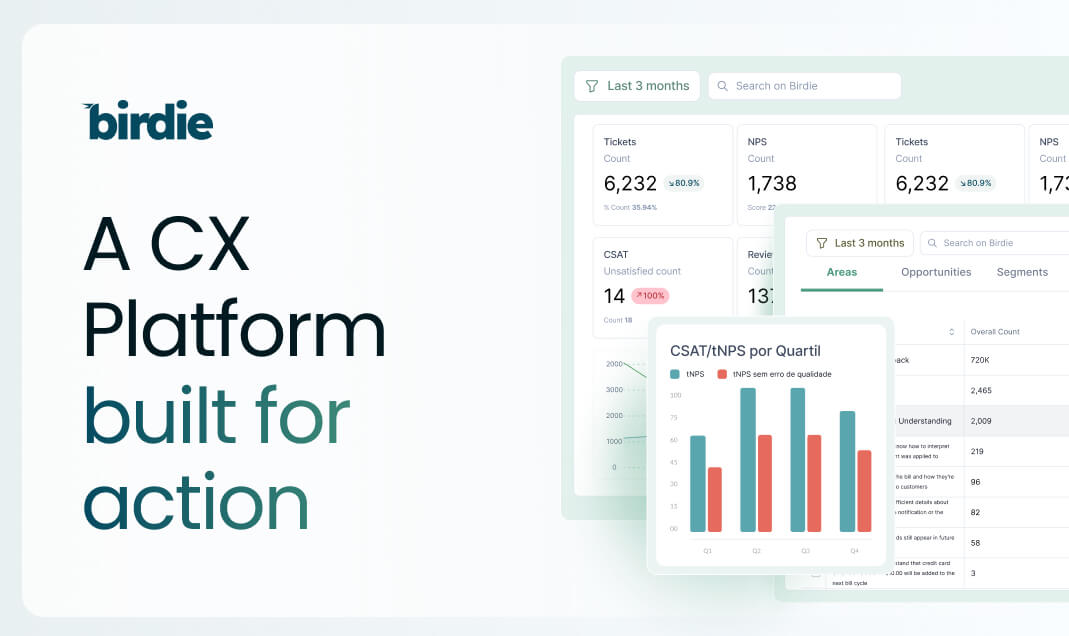
Social Listening tools are largely used in most organizations today, and, although they have a wide variety of applications, it's important to understand their limitations to generate actionable Consumer Insights, especially for Consumer Goods companies.
With consumers online more and more every day, it's uncommon today to find a consumer brand that doesn't have a social listening tool in place to monitor and understand what people are saying about a brand or topic.
The Age of the Customer and the Era of Now, mentioned by Forrester in 2013, accelerated that process even more at most organizations of all types. Managers of Marketing and Communications teams started using Social Listening tools to capture comments and conversations and extract learnings from them. As a natural evolution, other customer-facing areas (like Customer Service, Product, Consumer Insights, and Category Management, just to name a few), also tried to leverage these tools to generate Consumer and Product Insights.
Relying on social listening tools for other functions, however, has become something complex and time-consuming, as these tools can't deliver the granularity and reporting functions needed by other areas. And that's the exact moment where companies should consider using a comprehensive Consumer Insights platform. This post will cover the main differences between both tools and give some examples of when to use each.
What is Social Listening
Social Listening tools, as the name suggests, are solutions that focus on understanding what people are saying about a brand online, especially on social media, and include trending topics and keywords related to that brand.
As something that is centered around brands and keywords, social listening tools can help monitor brand mentions, sentiment, engagement, reputation, and conversations that your brand can fit into.
They are a great source of insights for a creative team that wants to explore trending topics for advertising campaigns, measure the results and virality of campaigns, discover influencers to work with, and even help Customer Service teams to identify unsatisfied customers and respond accordingly.
Being centered about brands and keywords mentioned in social channels, on the other hand, has its limitations, especially in a context where the number of channels where consumers share their opinions about products is growing - and so are the number of conversations: 62% more product reviews are written every year. But what are these limitations?
The key limitations of Social Listening for Consumer Insights
Even though Social Listening platforms are great to monitor and measure brand aspects, they fall short when what matters are Consumer Insights in a more detailed way to serve the Product, Insights, and Business teams.
Limitation #1 - Keywords and queries increase the biases and blind spots
Being based on keywords and queries that need to be set up by the client, these tools tend to be biased and have blind spots. That means that the quality of their results will depend directly on whether the client was able to select and combine the right keywords - broad and specific enough - to find relevant data. This inside-out approach limits the findings and increases the risk of missing important learnings about what consumers expect or value about a product or service.
Limitation #2 - Keywords and queries significantly increase the setup effort
Another issue with keywords is the fact that setting up queries demands a lot of work from the client to build a comprehensive enough dashboard. It can take weeks of work until having something that covers most of the metrics and elements needed, and even that won't be able to fix limitation #1.
Limitation #3 - Lack of specialization in the Product and Buying Experience domains
Once finished setting up several queries and getting the reports, executives trying to use a social listening tool to capture Consumer Insights might face another challenge: getting rid of all the noise of conversations that are irrelevant to understanding aspects related to the product, its usage, or the buying experience.
That happens because of the way social listening tools work: they don't have a business dictionary that allows them to understand the context of the conversation and already group it according to KPIs and metrics commonly used to understand consumers and the why behind the buy.
Limitation #4 - Focus on engagement, not on reporting & intelligence
As tools that were created to engage with users in social media, these platforms are strongly focused on listening and responding. Their reporting features were developed later and are still focused on learning to respond, not to generate insights or intelligence. As a consequence, their reporting features are limited when it comes to doing a deep analysis of different elements from the buying experience.
Limitation #5 - Ability to analyze other sources of consumer feedback & consumer data
Although some of the largest social media companies, like Sprinklr and Brandwatch, have already started expanding their sources of data beyond social media, capturing some discussion forums and other channels, they are not open enough to connect and analyze other sources of consumer data, such as Customer Service Systems, sales data, or even eCommerce reviews - even though these are the most important sources of information for the buying decision to 94% of consumers. Besides that, they still analyze everything only from a brand perspective, which limits the type of insights they generate.
A different approach to generate insights from consumer feedback channels
So if the idea is to get Consumer Insights, especially about products, the user buying experience, and other business aspects, what should a brand do? Well, we believe that the first thing is to define what are the KPIs and reports you want to have.
Once that is done, it's time to confirm if these KPIs will be easily measured using a tool that is focused on brand and engagement. If yes, a social listening tool will do - actually, it will be the best option. If no, I strongly encourage you to look for solutions whose core is data analysis, reporting, and insights.
These systems are normally called systems of intelligence or insights-as-a-service platforms, and in our next post, we will cover the main differences between both types of solutions to help you identify what solutions are best for your needs.








